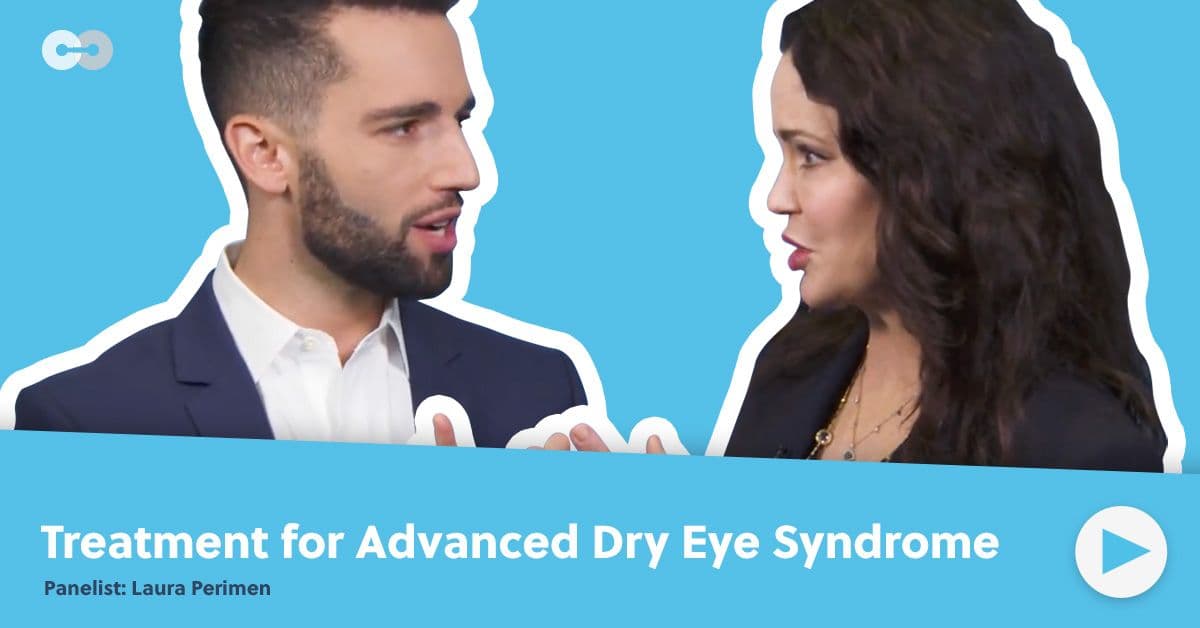When it comes to dry eye syndrome treatment and therapies, there are far more advanced treatment options that exist beyond artificial tears, warm compresses, and other more traditional management methods.
Patients who suffer from dry eye did not have this chronic disease forever, but rather developed it over time. Dry eye often develops when one loses a happy, healthy, beautiful homeostatic control of their tear film to disease.
Where did things trip up? Where did they fall?
There is a clear role for early detection, early intervention, and preventative maintenance. We need to do a better job when it comes to talking with our patients, amongst our colleagues, and with each other.
Treatment options for dry eye syndrome
Starting with the basics, it is, of course, important to look at lid hygiene. In this arena, we have warm compresses, microwaveable masks, nutraceuticals, good lifestyle recommendations, and some other basic options. When that's not sufficient, then we need to start pulling out other things like diagnostics to understand what is truly going on, like an osmolarity elevation or something else.
If we have a tear breakup time problem we should be analyzing if there is an abnormality in the way that meibomian glands look and the quality of the meibum that is coming out, and we can do that through imaging. By looking for and screening for these things earlier on, we can offer patients advanced therapies, such as in-office thermal expression treatments.
Thermal pulsation and LipiFlow
With advancements in dry eye therapies, we have countless tools available to us like LipiFlow that we can use to make a massive difference in patients who suffer from meibomian gland dysfunction and associated dry eye syndrome.
It is important to remember that this therapy requires an integrated approach to how you manage a patient’s disease state. You need to be looking at every aspect of the disease and how to treat it because dry eye disease is multifactorial.
The psychology of dry eye disease
While there isn’t anything noted in the literature as it relates to anxiety and stress and their association with dry eye, there has been some anecdotal evidence that they may play a role.
There is this constant feedback between the quality of the tears and sensation. These elements leave feedback to and link up in the brain and to command the lacrimal glands, goblet cells, and meibomian glands, which are under constant neuro-biological control.
When it comes to coping with dry eye, this is precisely where the psychology of dry eye comes in. Sometimes dry eye patients are really anxious, angry, frustrated and upset.
This frustration and anxiety is not just in their head. Chronic pain of any kind can take a serious toll on the mind and body. We know this and see it in back pain and postsurgical pain. Supporting the whole patient—both mind and body—can help their recovery because pain is in some way subjective as well.
Patient education and compassion are critical when it comes to consoling these patients. Helping them understand that we hear them, understand them, and see what the problem is, and explaining that there are things to help them can improve how they perceive success when it comes to treatment options
